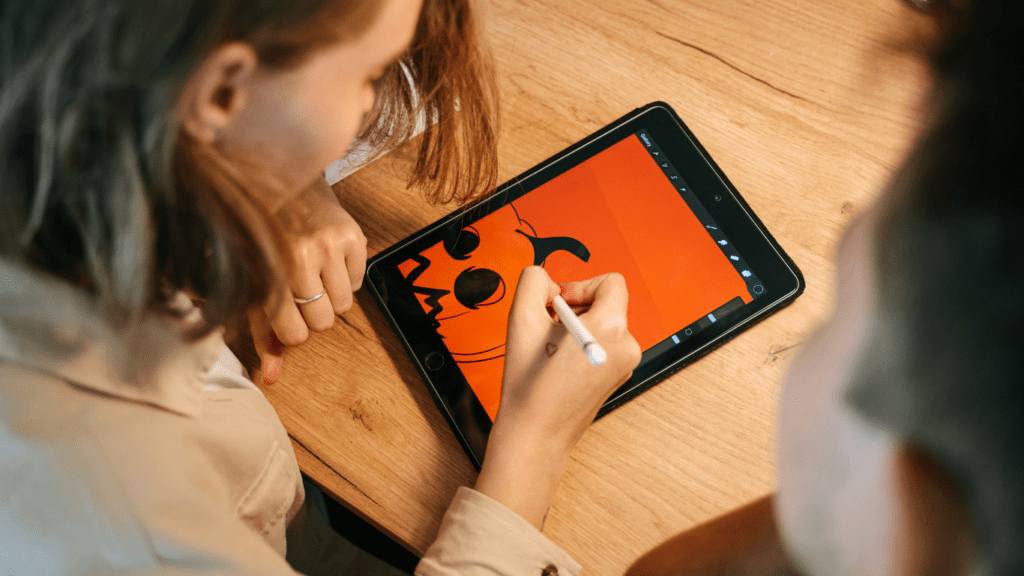Understanding Digital Art
Digital art, integral to contemporary culture, involves creating artwork using digital technologies. Artists use tools like graphic tablets, styluses, and software to produce diverse creations. This art form encompasses digital painting, 3D modeling, and pixel art.
Digital painting replicates traditional painting using software. Programs like Adobe Photoshop provide brushes and textures, enabling artists to mimic watercolors, oils, and more.
3D modeling generates three-dimensional objects or scenes digitally. Artists use software like Blender or Autodesk Maya to craft models utilized in films, video games, and virtual reality.
Pixel art employs small, colored squares to create images, often for video games. This retro art style is crafted using programs like Aseprite or Photoshop.
Digital art allows quick iterations and easy corrections. Unlike traditional mediums, there’s no need for physical materials. This contrasts starkly with traditional art forms, which can be resource-intensive.
Digital artworks can easily be shared, sold, or duplicated online. Platforms like DeviantArt, ArtStation, and Behance facilitate global distribution and community engagement.
The versatility and accessibility of digital art continue to drive its popularity. This transformation fuels creativity while posing new environmental considerations, aligning with the broader discussion on sustainability in artistic practices.
Environmental Impact of Traditional Art
Traditional art forms, such as painting, sculpture, and printmaking, have distinct environmental impacts. Understanding these impacts can highlight the importance of exploring greener alternatives in art.
Resource Consumption
Traditional art consumes significant resources. Artists use materials like canvas, paint, and brushes, which often involve raw materials and energy-intensive manufacturing processes. Canvas and paper require tree harvesting, while paint production involves chemicals and pigments that can negatively affect the environment. Additionally, sculptors use marble, clay, or metal, requiring mining and refining, contributing to resource depletion and pollution.
Waste Production
Traditional art generates considerable waste. Paints and solvents contain hazardous chemicals, producing toxic waste that can harm ecosystems if not disposed of properly. Non-biodegradable materials like plastic palettes and synthetic brushes add to landfill burden. Sculpting produces waste in the form of stone fragments and metal offcuts, contributing to environmental degradation. Responsible waste management is necessary to mitigate these impacts.
The Rise of Digital Art
Digital art’s emergence has transformed the creative landscape by blending artistry and technology.
Advances in Technology
Breakthroughs in technology have enabled artists to create more efficiently. Software like Adobe Photoshop, Procreate, and Blender allows for intricate designs. High-resolution graphic tablets, combined with styluses, offer precision. Cloud storage and collaboration tools facilitate global cooperation, enriching creativity.
Popular Digital Art Forms
Several digital art forms have gained popularity. Digital painting replicates traditional brush strokes on a screen. 3D modeling creates complex characters and environments, often used in gaming. Pixel art gives a nostalgic nod to early computer graphics, creating detailed scenes with individual pixels. Each form leverages technology for unique artistic expression.
Sustainability in Digital Art

Digital art offers several environmental advantages. Artists and creators contribute to greener practices by adopting digital tools and techniques.
Reduced Material Waste
Using digital platforms, artists eliminate the physical materials required for traditional art. Paint, canvases, paper, and chemicals, which often end up as waste, are no longer needed. For example, a digital painting on a tablet produces zero physical waste compared to a traditional canvas painting.
Lower Carbon Footprint
Digital art significantly reduces carbon emissions. Traditional art supplies involve manufacturing, packaging, and transportation, each contributing to carbon output. Digital creations, however, rely on digital tools and software, which don’t have these requirements. High-resolution tablets and digital storage further reduce the carbon footprint by minimizing physical materials’ dependency. Services like cloud storage also streamline the sharing process, cutting down on transportation-related emissions.
Challenges and Considerations
Digital art offers greener solutions, but it’s not without challenges.
Energy Consumption
Digital art tools require electricity. High-performance computers, graphic tablets, and software necessitate substantial energy. Using energy-efficient devices can mitigate this impact, but widespread adoption is needed.
E-waste Management
E-waste poses another concern. Devices like:
- tablets
- computers
- peripherals
eventually become obsolete, contributing to e-waste. Recycling and proper disposal practices are essential for managing this growing issue. Many tech companies offer recycling programs, but awareness and participation must increase to make a significant difference.
Future Trends in Sustainable Digital Art
Artists and technologists continually explore methods to merge sustainability with digital creativity.
Innovations in Green Technology
- Advancements in green technology fuel the evolution of sustainable digital art.
- Energy-efficient processors and renewable energy sources are becoming more prevalent in digital art creation.
- New graphics cards consume less power while delivering enhanced performance.
- Cloud-based solutions, like Adobe’s Creative Cloud, utilize data centers powered by renewable energy, reducing the carbon footprint of software use.
- Blockchain technology offers potential for sustainable digital art by enabling transparent and eco-friendly transactions.
Artists Leading the Way
Numerous artists actively champion sustainability in their digital practices. For instance, artist Joanie Lemercier integrates renewable energy into art installations, minimizing their environmental impact. Other artists use e-waste in their digital creations, repurposing discarded electronics into meaningful artworks. Platforms like EcoArtProject showcase these eco-conscious artists, fostering a community dedicated to sustainability. These artists inspire others to adopt greener practices, gradually shifting the entire digital art landscape towards more sustainable methods.





